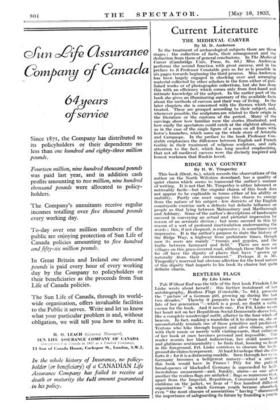Current Literature
THE MEDIEVAL CARVER By M. D. Anderson
In the treatment of archaeological subjects there are three stages : the collection of facts, their arrangement and the deduction from them of general conclusions. In The Medieval Carver (Cambridge Univ. Press, 8s. (Id.) Miss Anderson performs the second function with great success, and in his preface to it Professor Constable goes as far as is possible in six pages towards beginning the third process. Miss Anderson has been largely engaged in checking over and arranging material collected by other scholars in the form either of pub- lished works or of photographic collections, but she has done this with an efficiency which comes only from first-hand and intimate knowledge of the subject. In the earlier part of the book she gives an illuminating summary of the available facts about the methods of carvers and their way of living. In the later chapters she is concerned with the themes which they treated. These are grouped according to their subject, and, whenever possible, the sculptures are related to their origin in the literature or the customs of the period. Many of the carvings show how familiar were the stories illustrated, and how easily the spectators could catch at the slightest allusion, as in the case of the single figure of a man on all fours with horse's haunches, which sums up the whole story of Aristotle and Campaspe. In the preface to the book Professor Con- stable emphasizes the difference between English and French Gothic in their treatment of religious sculpture, and calls attention to the fact, which has long needed emphasizing, that not all medieval carvers were the divinely inspired and honest workmen that Ruskin loved.


































































 Previous page
Previous page